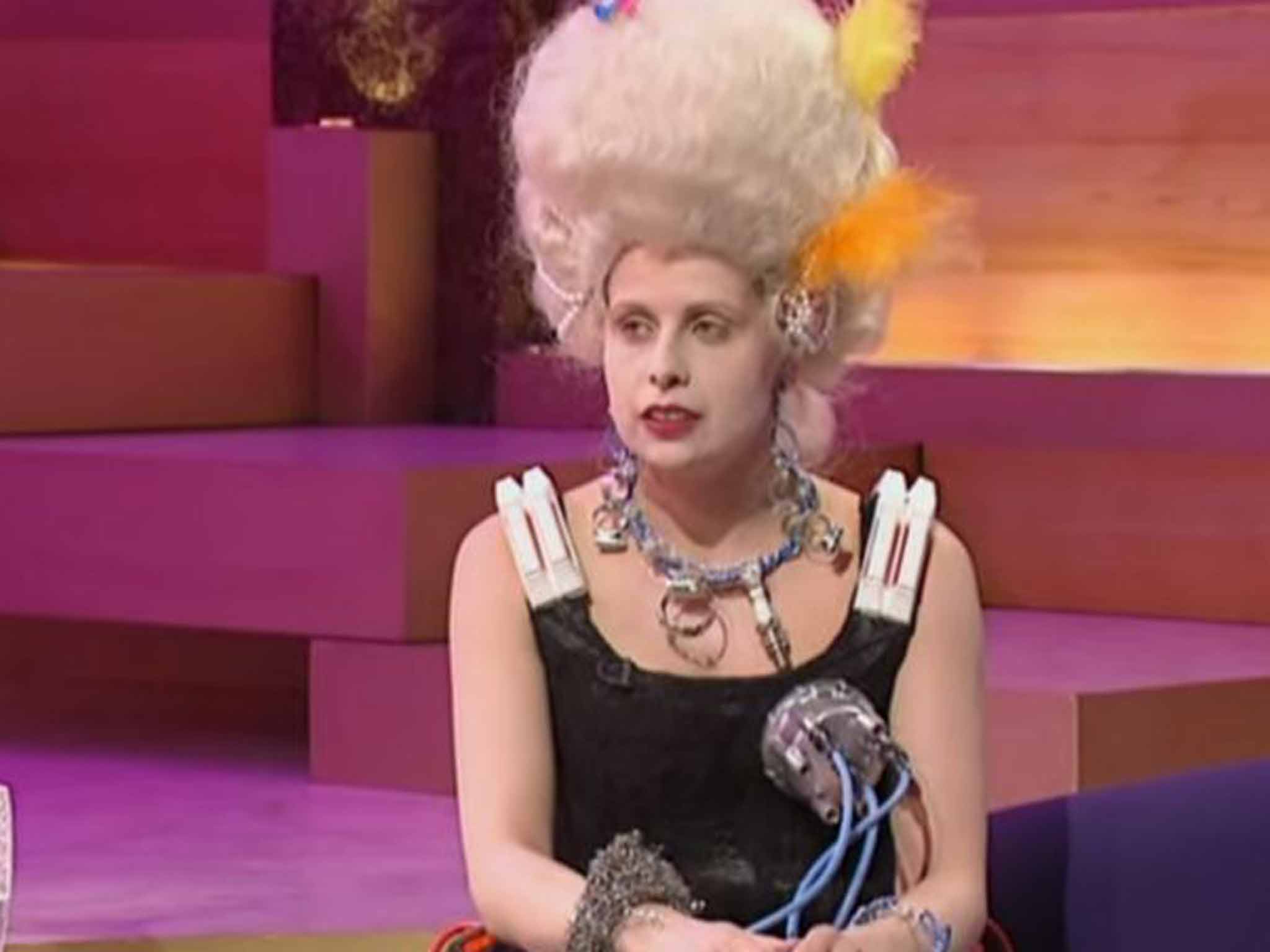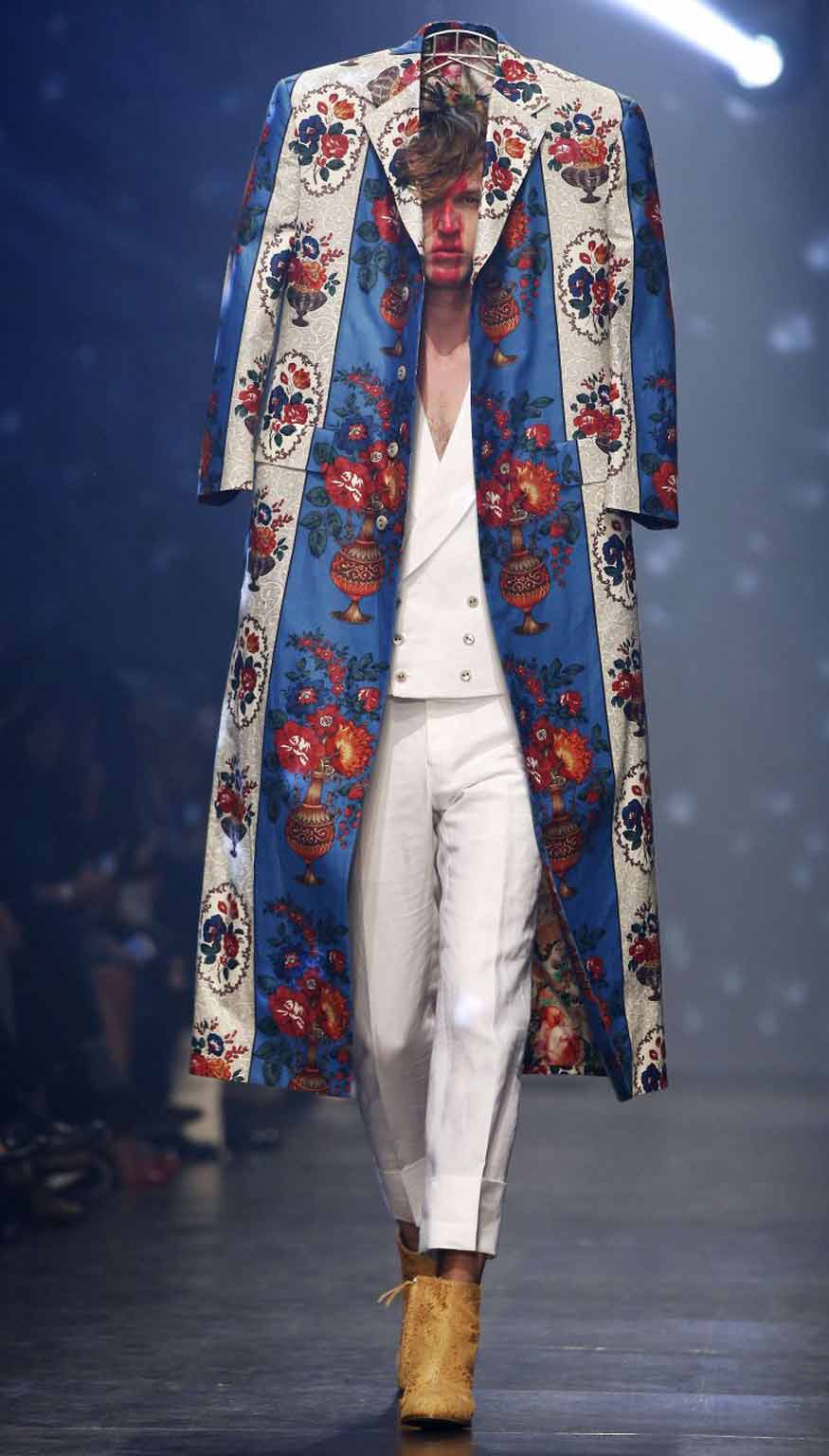Vivienne Westwood's latest shocker: How ideas for high-street stores start on the high-fashion catwalks
In one way or another, says Maggie Alderson, we'll all follow suit

Your support helps us to tell the story
From reproductive rights to climate change to Big Tech, The Independent is on the ground when the story is developing. Whether it's investigating the financials of Elon Musk's pro-Trump PAC or producing our latest documentary, 'The A Word', which shines a light on the American women fighting for reproductive rights, we know how important it is to parse out the facts from the messaging.
At such a critical moment in US history, we need reporters on the ground. Your donation allows us to keep sending journalists to speak to both sides of the story.
The Independent is trusted by Americans across the entire political spectrum. And unlike many other quality news outlets, we choose not to lock Americans out of our reporting and analysis with paywalls. We believe quality journalism should be available to everyone, paid for by those who can afford it.
Your support makes all the difference.The outfit pictured here from Dame Vivienne Westwood's latest Paris fashion show, featuring a coat so oversized it had to be suspended on a giant hanger above the model's head, would not have looked out of place during Alan Partridge's interview with “leading fashion designer Yvonne Boyd”. A comic character who happened to have a Northern accent and flat delivery of complex philosophical ideas, Boyd – for those who remember that particular episode of Knowing Me Knowing You from 1994 – seemed remarkably similar to Dame Vivienne, one of Britain's most well-known and globally respected designers.
The clothes in the Partridge show – clearly knocked up with glee in the BBC costume department – featured saline drips, bandages and corn plasters and were designed to be laughed at. Partridge mocked them as “pantomime” outfits. This runway look is serious. It is, of course, also ridiculous and unwearable. It's exactly the kind of shot from a Paris catwalk that provokes comments about how stupid high fashion is – and by implication, all those involved with and interested in it.
Stupid enough to spearhead a global industry valued by the Joint Economic Committee of the US Congress as being worth approximately $1.2tn this year. Because while fashion may at its most reduced level be simply be about the prosaic matter of flesh-concealing, element-protecting “clothes”, at the very top end, from where people like Dame Vivienne do the steering, it's actually about ideas.

There are also wearable garments concealed in the most outlandish of Paris catwalk shows – you can see a typically tailored suit peeping out under the elephantine coat here – but it's the seemingly “crazy” ideas that keep the business of fashion moving.
If we were to ask Dame Vivienne what the notion was behind her giant coat, we would probably get a complicated answer – she's a big-picture thinker – but whatever inspired her, it boils down to promoting change.
Fashion has become such a huge industry because human beings thrive on novelty. If it were just a matter of keeping us all warm, decent and dry it would be worth a fraction of its current value. Most of us have far more clothes than we could ever wear out (in fabric terms), but keep buying more because primal instincts make humans attracted to the new. Also, staying at least nominally “with it” sartorially is an essential aspect of anybody's image. To wear obviously outmoded clothes is to be perceived as eccentric at best – sad, inadequate, or downright weird at worst.
And while we may source these exciting, unnecessary new clothes in high-street chain stores, or online, the ideas for them start on the high-fashion catwalks. Outfits such as this are the fashion equivalent of a Formula One car. You wouldn't do the school run in a McLaren, but in a few years' time some ingenious little widget that makes fuel squirt faster, or pistons move more efficiently, developed by wonks for Jenson Button's greater driving efficiency, will feature in your new road car.
In the same way, styling ideas presented as impractically as this one will become part of our everyday wardrobes, in a pared-down version. It's called “trickle down” and a vivid example would be the trousers cut so low that they revealed the bum crack, notoriously first shown by late British designer Alexander McQueen, in 1996. That shockingly outrageous – and literally unwearable – style then appeared in McQueen's boutiques, subtly adjusted for decency, and went on to influence global fashion to such an extent that ultra low-slung hipster jeans have been one the defining style characteristics of the first decades of this century. They are still on sale in every chain store now.
The best description of this process can be watched in the legendary scene in The Devil Wears Prada, which has come to be known as “The Cerulean Top Smack Down”. In this pithy two-minute speech Meryl Streep's character Miranda Priestly (as subtly based on US Vogue editor Anna Wintour as “Yvonne Boyd” was on Dame Vivienne) explains fashion trickle down to her new assistant (Anne Hathaway), who has foolishly sniggered during a styling session in her office.
Referring to Hathaway's “lumpy blue sweater”, which she suggests the young woman chose “because you're trying to tell the world that you take yourself too seriously to care about what you put on your back…”, she then goes on to explain that the jumper is not just blue, it's “cerulean”, and analyses the precise fashion shows that led to the production of it. “Then cerulean quickly showed up in the collections of eight different designers,” says Ms Priestly. “And then it, uh, filtered down through the department stores and then trickled on down into some tragic Casual Corner where you, no doubt, fished it out of some clearance bin.
“However, that blue represents millions of dollars and countless jobs and it's sort of comical how you think that you've made a choice that exempts you from the fashion industry when, in fact, you're wearing the sweater that was selected for you by the people in this room…”
So, understand this: by the very same process, in about four years' time, you will be wearing a jacket with shoulders exponentially bigger than the ones that you are wearing now. Because after 25 years or so of understated shoulder lines (which started with Giorgio Armani), we are heading back towards the linebacker silhouette of the 1980s. And with this grand sartorial overstatement (which appeared on the backs of both men and women on the catwalk), Dame Vivienne Westwood is just priming us to get used the idea
Maggie Alderson is a former editor of 'ELLE' magazine
Join our commenting forum
Join thought-provoking conversations, follow other Independent readers and see their replies
Comments